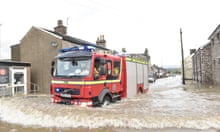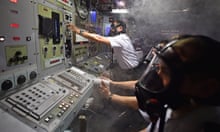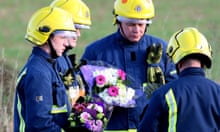You’re in a box, unable to see in front of your face and, despite the heavy kit and breathing apparatus, your skin is beginning to tingle like bad sunburn. In temperatures three times greater than that which cooks a Sunday roast, with only your sense of touch and what’s left of your hearing beyond the crackle of the radio and your own heavy breathing – armed only with a heavy hose and the water it contains – your task is to hold fast, save life and fight fire.
Smoke is made up of flammable gases, and entering a burning building is akin to walking into a giant cylinder of pressurised gas, ready to ignite. Every instinct tells you to get out; adrenaline is high, panic is natural. But the firefighter has to overcome these instincts, complete their task, and respond to an environment as dangerous as they get that can change in the blink of an eye.
This level of control not only requires physical strength and fitness, but also a significant amount of training, practice and psychological preparation. Any oversight, misinformation, wrong guidance or malpractice will have – and has had – deadly consequences.
But central government funding cuts are slicing into firefighter training budgets, putting lives at risk.
I train firefighters in what is known as compartment firefighting: I teach them the scientific principles behind the process of combustion and associated chemical reactions, and how to predict how a fire will develop and what dangers it presents with the limited senses available to them. Above all, I provide practical training, giving firefighters the opportunity to try out learned techniques on real, controlled fires. Compartment firefighting is the most hostile environment, where most fatalities occur.
This type of training is under threat. National guidance states that each firefighter should do refresher practical training at least every two years, and preferably every year. But as you might imagine, it’s expensive, requiring a high level of supervision, safety controls, emergency procedures, contingencies, trained instructors, equipment and fuel.
Senior fire officers forced to allocate increasingly tight budgets are in an extremely difficult and unenviable position – one made harder in some cases by the recent recategorisation of certain types of fires, which happened in my former brigade of Tyne and Wear in 2007–8 . What was once classed as FDR1 – the code for property fire, such as a small cooking fire with damage only to food and cookware – is now known, in some fire services, as a “false alarm, good intent, near miss” incident. This means that, despite needing an approach with similar planning and control measures as many much larger incidents, these are no longer “fires” in the eyes of statisticians and politicians. And with fewer “fires”, why push funds towards training to combat them?
All fire service departments have seen budget reductions, but as the national focus has turned to community safety – home fire assessments, fitting free smoke alarms, and so on – training and operational response seems to me to have been hit harder. Meanwhile chief fire officers such as Peter O’Reilly at Manchester and Dan Stephens at Merseyside have gone on record, warning of the catastrophic consequences of the decisions they are being forced to make.
Over the past 20 years my industry has developed a better understanding of fire dynamics and dangers, led originally by the Scandinavian fire services and fire science academics. But this ever-increasing pool of information has been shoe-horned into pre-existing “refresher” training courses on general breathing apparatus skills, such as searching in darkness, safe movement and entry control. These are all critical skills – but it is very difficult to impart all relevant information and learning into annual or bi-annual two-day training courses. Again, it is hard for even the most progressive chief officers to argue for staff to be taken “off the run” and given extra training in any discipline with the necessary costs that are incurred.
A lack of training costs lives. An analysis of UK firefighter deaths in the line of duty from 1995 to 2013 [pdf] shows a worrying trend: 15 people have died fighting fires in England, compared with just three people at other emergency incidents. If more firefighters have sufficient understanding of certain principles of pressure, volume, temperature and movement of gases, perhaps we’ll see fewer tragic deaths in the future. Benjamin Walker is assistant chief (training and operations) for Ignis Global, and trains firefighters all over the world
Talk to us on Twitter via @Guardianpublic and sign up for your free weekly Guardian Public Leaders newsletter with news and analysis sent direct to you every Thursday.







